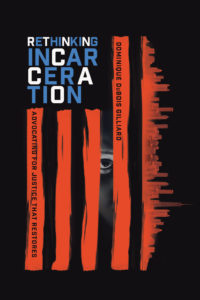Blogger Anneli Loepp Thiessen is an active song leader, researcher, classical musician, and music educator. She is pursuing a PhD in Interdisciplinary Music Research at the University of Ottawa where she received her Masters of Music in Piano Performance.
Blogger David Bjorlin is a worship pastor at Resurrection Covenant Church (Chicago), a lecturer in worship at North Park Theological Seminary (Chicago), and a published hymnwriter.
(This is an abridged version of an article that appears in
The Hymn: A Journal of Congregational Song 72, no. 3 [Summer 2021].)
INTRODUCTION
If you scan the repertoire of a mainstream White evangelical congregation on a Sunday morning, you will notice a range of images used to represent God and one’s own spirituality. Some of these are based in scripture, others in popular culture, and yet others are commonly used poetic phrases. For the most part, these are meaningful, appropriate images. But last year we noticed a trend in imagery that didn’t sit right. In song after song written mostly by and for White evangelicals, there seemed to be an inordinate number of references to enslavement: chains, freedom, captivity, slaves. While not absent from the biblical narrative, the references seemed strange for a population that not only had not experienced enslavement in their history, but largely argued against recognizing the lasting harmful effects of slavery that continue in the the ongoing injustices faced by the African American community. Further to this, we noticed that it wasn’t just in the words of the songs that mentioned enslavement; the music too appropriated the rhythms and sounds of African American culture and experience. So, we decided to study this phenomenon to see how and why this might be the case.
Our first step was to analyze the words of the songs themselves in a more systematic manner. When we analyzed the June 2020 CCLI Top 100 list, we found that 28 of the 100 songs included one or more of the words with the following breakdown:
|
Term |
Number of Mention |
|
free/freedom |
22 |
|
chain(s) |
12 |
|
captive(s) |
5 |
| slave(s) |
4* |
*Several songs mention more than one of the terms, the total number of mentions is greater than 28.
Clearly, the images of enslavement and freedom have sparked the imaginations of White evangelical songwriters and congregations, but why? And how is this language being employed in songs? How is it both contextualized and embodied in particular congregations and performance practices?
BUT WHY?
To answer the first question, we begin where most evangelicals start their theological inquiry: the Bible. Enslavement and freedom are indeed used as images of salvation, especially in the letters of Paul (e.g., Rom. 6:20-22). Yet, Paul employs a number of metaphors for salvation, including redemption through sacrifice (Romans 3:21-30); justification (Gal. 2:15-16); adoption (Romans 8-9); reconciliation to God (2 Cor. 5:18-20) and each other (Eph. 2:11-22), and clothing oneself in newness of life (Col. 3:10-14). So, why do CWM songwriters seem to be drawn particularly to the language of enslavement and freedom?
In addition to the Bible, another major tenet of evangelical theology is the centrality of Christ’s substitutionary death on the cross for humanity’s salvation. Yet, it is a subset of substitutionary atonement—ransom theory—that perhaps best helps to explain the prominence of enslavement and freedom metaphors in CWM. In this atonement theory, sinners are enslaved to sin, death, and evil (or Satan himself) until Christ ransoms us by taking our place and our rightful punishment and freeing us. So, when White evangelicals look at the Bible through the theological lens of the ransom theory of atonement, it is quite understandable why the enslavement/freedom motif of salvation with its language of chains, bondage, captivity and freedom would gain prominence over the other salvation metaphors that Paul employs. Like looking at the back of a cereal box with the 3D glasses uncovered at the bottom of the bag, these particular theological metaphors jump out while the others recede to the background.
MUSICAL ANALYSIS
Beyond just being represented textually, some songs even embody images of enslavement and chains musically. Take, for example, the song “Sing It From the Shackles” by Irish folk band Rend Collective. If you listen to the video below, you will hear musical characteristics that embody the sonic quality of sounds associated with oppression, through a percussive beat that is reminiscent of chains being thrown or a whip being cracked. In each verse, the singer poses a question: “Can you hear that freedom sound?” The premise of freedom having a sound draws us to the underground railroad, where spirituals contained coded language that instructed enslaved people on how to escape to freedom.
The ensemble’s introduction of darkness in opposition to praises in the bridge contributes to the problematic use of language: “Let the darkness hear our praises.” The equation of darkness with sin or an absence of God is problematic in all contexts, but is particularly concerning in a song that is so clearly situated within narratives of enslavement and imprisonment.
A second example to consider is “Slave to Nothing” by Zach Williams. In a YouTube video describing the song, Williams describes the writing process: “This obviously is a song that we had a lot of fun with… There’s been a lot of things in my past that I’ve been a slave to, from addictions to fear, and I’m sure there’s a lot of things that everybody else struggles with, that they’ve been a slave to.”
If you listen to the song, you will notice that “Slave to Nothing” pervasively uses enslavement imagery and draws on clear musical influences of blues and gospel, influences that draw on experiences and histories that are not those of the songwriters. White artists have a history of appropriating the blues music of Black artists through imitative and adaptive “covers.” Both blues and gospel have their roots in the experiences of enslavement and life after slavery, and White artists must be responsible for how these genres and their histories influence their music. When White North Americans appropriate other cultures, it contributes to exploitations of dominance.
Textually, Williams presents the perspective of a prisoner on trial, offering cries of innocence and defiance over guilt. The use of slavery language to describe imprisonment is problematic particularly when considering the American history of enslavement and the high rates of incarceration of Black people in US prisons. Williams’s preference for language of enslavement and imprisonment exemplifies the way White evangelicals adopt the experiences of Black people as if they are their own.
SINGING, BUT NOT TALKING, ABOUT ENSLAVEMENT
All of this textual and musical analyses raises a particularly pertinent question for White evangelical communities singing about enslavement and freedom in the United States: What does it mean for mostly White congregations to sing songs about enslavement and freedom in the context of a nation with a long and bloody 400-year-history of subjugating Black people through the literal chains of the Middle Passage and chattel slavery, through the terror and abuse of lynchings during the Reconstruction era, through the segregation and suppression of the Jim Crow, to the present-day era of the “war on drugs” and mass incarceration? Certainly, singing about spiritual slavery and freedom should call us to contend with physical slavery and freedom with its long and deleterious effects.
Yet, just as the evangelical theological imagination is formed to emphasize images of enslavement and freedom as primary metaphors of salvation, it is also formed to ignore the systemic nature of injustice or the lasting effects of historic oppression. In Michael Emerson and Christian Smith’s seminal Divided by Faith: Evangelical Religion and the Problem of Race in America, they note that White evangelicals are much less likely to view racism as a pressing problem that needs to be addressed and are more likely to blame African American individual effort as the source of disparities rather than structural systems. While written almost twenty years ago, more recent studies have upheld the basic argument that White Christians generally, and White churchgoing evangelicals particularly, tend not simply to downplay racism, but support racist policies.
THE WHITE EVANGELICAL TOOL KIT
To explain this phenomenon, Emerson and Smith argue that White evangelicals have a limited “tool kit” that tends to focus on individual free will (“accountable freewill individualism”) and personal relationship (“relationalism”) while being suspicious of structural influences on society (“antistructuralism”) and the lasting impact of historical injustices on the present (“ahistorical”). So, when White evangelicals sing CWM songs about chains or slavery or freedom, this tool kit leads them to ahistoricize and decontextualize slavery and instead individualize and spiritualize captivity and freedom to refer to one’s own personal salvation story. Thus, chains may be interpreted as an alcohol or pornography addiction—because these can be viewed as an individual struggle outside of a larger historical narrative—but not actual slavery or the ongoing legacy of White supremacy—because that is both corporate and systemic with historical antecedents and influences. This is perhaps the central irony of White evangelicalism’s continued use of these images: those whose theology leads them to sing the most of enslavement and freedom as the central metaphor of Christian salvation are simultaneously the group most likely to downplay the significance of slavery’s lasting impact on the people of the United States and promote (or at least not oppose) policies that do harm to African Americans—the one group that knows the ongoing injustice and traumatic effects of enslavement.
We believe this irony is inherently problematic and calls all churches to a more critical approach to writing, singing, and choosing songs for corporate worship. For all White churches—evangelical or not—this might ask us to approach these types of songs with a hermeneutic of suspicion, questioning why communities that have such little historical or contemporary experiences of oppression are drawn to language of oppression and freedom. It at the very least calls our White churches to engage in the work of naming, confessing, and dismantling the historic and contemporary forms of oppression in our churches and society if we are to sing these songs with any integrity.
WHERE DO WE GO FROM HERE?
For White churches like our own that sing these songs, it perhaps challenges us to practices of disengagement and engagement. First, we must disengage from the practice of singing our songs like we too often read our Bibles: as if we sing without historical, cultural, political, or theological context. This might call us to stop singing these songs of enslavement and freedom—at least for a season—especially if our communities refuse to discuss or acknowledge the history of slavery and the ongoing injustices that continues to create. Positively, it asks songwriters and worship leaders to engage other biblical images of salvation—like reconciliation to God and one another in our songs—in our songs and other worship resources. Not only does this give us a more holistic and biblical account of salvation, but these more relational metaphors may help re-form the White evangelical imagination toward recognizing the powers and principalities of structural sins that have plagued our country for generations. The use of songs like these could then help expand the evangelical tool kit and give communities the theological vision and language to begin engaging in discussions around the many forms of historic and social oppressions that have too often been ignored. Maybe then we can sing, “My chains are gone, I’ve been set free,” and understand the true nature of freedom in all of its height and breadth and depth.





